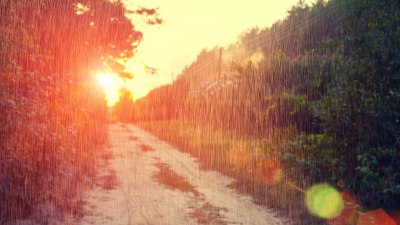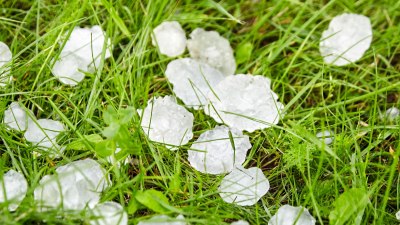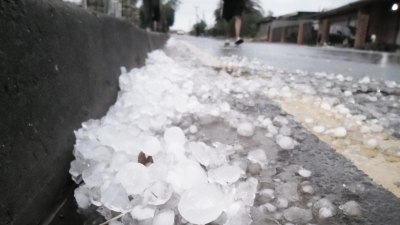What Happens When the Sun and Rain Appear Together
Explore the fascinating phenomenon of sun and rain appearing together, including rainbows and weather patterns.

When the sun and rain appear together, it creates a unique meteorological spectacle that captures the imagination of many. This rare occurrence often leads to stunning natural phenomena, the most famous of which is the rainbow. In this article, we will explore the science behind why this phenomenon occurs, its implications, and the beauty that emerges when the sun and rain coexist in our atmosphere.
To understand what happens when the sun and rain come together, we need first to discuss the conditions that lead to this occurrence. The sun shines brightly while it rains lightly, and this specific combination tends to happen primarily during transitional weather, often following a storm or just before it. This phenomenon occurs when the sun is positioned in the sky at an angle that illuminates the rain, usually in the late afternoon or early evening. The result is a tapestry of light created by the droplets of water in the air, refracting sunlight and forming a dazzling display.
One of the most well-known outcomes of this combination is the formation of a rainbow. Rainbows result from the refraction, dispersion, and reflection of sunlight as it passes through raindrops. When sunlight enters a raindrop, it slows down and bends, splitting into its constituent colors – red, orange, yellow, green, blue, indigo, and violet. This bending of light is what creates the curved shape of the rainbow we see against the darkened sky filled with rain clouds. The more raindrops available in the air, the more vibrant the rainbow will appear. This relationship between sunlight and rain creates the perfect setting for this captivating visual display.
Understanding the Science of Light and Rain
The science behind this phenomenon lies in the principles of optics. When light travels from one medium to another, such as from air into water, it changes speed and direction. This change in speed causes the light to bend, which can lead to a mixture of colors when passed through multiple raindrops. Each of the colors emerges from the drop at different angles allowing us to see a spectrum while standing at a specific viewpoint. For a full rainbow, you need to be positioned with your back to the sun, facing toward the rain. It's also worth noting that rainbows are not purely circular; when viewed from higher elevation, they may appear as full circles.
Interestingly, not only raindrops create rainbows. Light can also bend through mist, spray, or even dew, as is often the case in waterfalls or foggy conditions. Moreover, other optical phenomena related to sunlight and rain include halos and glories. Halos are rings that appear around the sun or the moon and are caused by the refraction of light passing through ice crystals in cirrus clouds. Glories are often seen around the shadow of an observer in the midst of fog or mist and are created by the diffraction of light. Each of these and the rainbow requires specific atmospheric conditions to manifest, revealing the intricate interplay between light and moisture in the atmosphere.
Emotional and Cultural Significance
Beyond the science, the presence of both sun and rain has captured human emotion and cultural significance throughout history and across cultures. In many societies, this phenomenon is considered a good omen. The sight of a rainbow often brings joy and hope, symbolizing peace and the unity of opposites such as light and darkness, rain and sun. Many cultures have myths and stories surrounding the rainbow, from the biblical promise given to Noah to Hawaiian tales that reference the rainbow bridge between the earthly realm and the heavens.
The appearance of a rainbow can also evoke strong emotions, often reminding individuals of personal experiences or collective memories. It encourages moments of reflection, capturing the beauty of nature's duality and the lessons it teaches us; after a storm, there is always calm, joy follows sorrow, and beauty can be found in unexpected pairings.
Moreover, the scientific investigation of rainbows, as well as the sun and rain together, encourages individuals to take an interest in meteorology and environmental sciences. Many find themselves drawn to the study of weather patterns, climate change, and their impacts on natural phenomena as they seek to understand the mechanics of their surroundings better.
Rainbows in Art and Literature
Rainbows and the convergence of sun and rain have inspired countless works of art, literature, and poetry. Artists employ the vibrant colors of rainbows to evoke emotions and convey messages of hope, unity, and change. One might think of the famous song “Somewhere Over the Rainbow,” which expresses a longing for a brighter, better future. Similarly, visual artists, ranging from painters to photographers, have drawn upon this breathtaking phenomenon to illustrate the beauty of life’s fleeting moments.
Literature also reflects the significance individuals place on sightings of rainbows. They often appear as metaphors for change, love, and beauty in the face of adversity. Writers skillfully weave references to rainbows into their narratives, providing symbols of hope amidst struggles, allowing characters and readers to envision brighter horizons. In this way, the simple occurrence of sunlight and rain carries profound meanings that transcend its natural origins.
The Practical Considerations of Sun and Rain
While the aesthetic appeal of the sun and rain is undeniable, there are also practical implications for both weather forecasting and agriculture. The presence of sun and rain together can significantly impact local microclimates. Understanding these patterns aids in predicting weather changes, which is crucial for daily forecasts. Farmers rely on accurate weather predictions to plan planting and harvesting to ensure their crops thrive. The blending of sun and rain might indicate an optimal time for growth, illustrating how farmers harness such phenomena to maximize yield.
Furthermore, with the ongoing effects of climate change, scientists are closely monitoring these occurrences, observing changes in weather patterns and their impacts on ecosystems. Rainfall intensity, frequency, and the interplay with sunlight can signal shifts in climate that have cascading consequences in agriculture, water supply, and biodiversity. Studies highlight the importance of understanding these interactions as they contribute vital insights into sustainability practices for the future.
Additionally, urban planners must consider how these weather patterns affect city infrastructure. Excessive rainfall combined with sunny spells can lead to increased flooding risk, particularly in urban areas with inadequate drainage systems. By recognizing and planning for these weather phenomena, communities can work to mitigate the impacts of flooding and other weather-related challenges.
In conclusion, the simultaneous appearance of the sun and rain serves not only as a visually stunning marvel but also as a significant cultural and scientific phenomenon. From the enchanting sight of rainbows to the broader implications for nature, culture, and infrastructure, this combination illustrates the intricate relationships within our environment. Nature continually inspires deep reflection, curiosity, and awe, reminding us to appreciate the dualities that exist within the world. As we contemplate the beauty it brings, we are also encouraged to nurture a deeper understanding of our climate and the rising importance of sustainable practices. The moment the sun shines while rain gently falls invites us to observe, learn, and celebrate the wonders of our planet.











